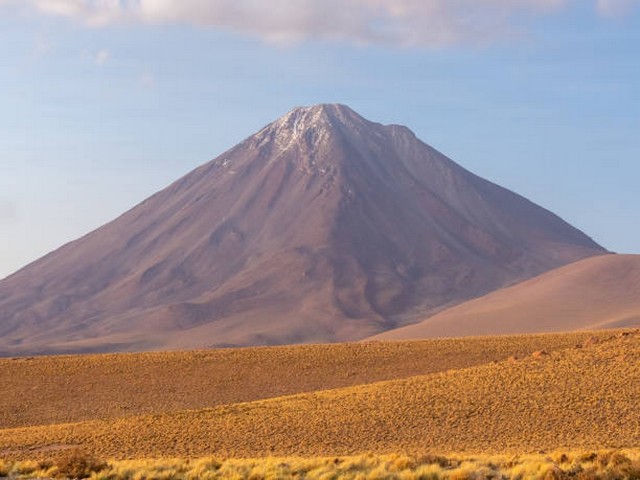How To Photograph Kilimanjaro’s Unique Flora And Fauna
Mount Kilimanjaro, Africa’s towering beacon, is not only famous for its snowy summit but also for the lush tapestry of flora and fauna adorning its slopes. For photographers, both novice and professional, Kilimanjaro offers a canvas like no other. Capturing its unique biodiversity through the lens can be as exhilarating as reaching its peak. At the Kilimanjaro Centre for Trekking and Ecotourism (KCTE), we understand the magnetic pull Kilimanjaro exerts on the adventurous spirit. This blog will guide you on how to immortalize the mountain’s ecological wonders through photography, ensuring you bring more than just memories back from your ascent.
Understanding Kilimanjaro’s Ecological Zones
The Lowland Forest
Your photographic journey begins in the lush lowland forests at Kilimanjaro’s base. Here, the dense foliage, inhabited by blue monkeys and colorful turacos, offers initial thrilling subjects for your camera. The key to capturing the vibrancy of this zone is to use a good lens for low-light conditions, as the thick canopy filters sunlight.
The Heath and Moorland
As you ascend, the landscape transforms into heath and moorland, characterized by heathers and the peculiar Dendrosenecio kilimanjari. This zone provides a dramatic backdrop, with giant groundsels silhouetted against the vast African sky—an ideal setting for wide-angle shots.
The Alpine Desert
The higher altitudes bring you to the stark, otherworldly beauty of the alpine desert. Sparse vegetation and the sharp, rocky ground create a lunar landscape. Here, the play of light and shadow, especially during sunrise and sunset, can yield spectacular, high-contrast images.
The Summit Zone
At the summit, the scenery is dominated by ice and snow, a stark contrast to the lush lower slopes. Photographing this area requires adjustments in exposure settings to manage the bright, reflective surfaces.
Capturing Flora and Fauna: Tips and Techniques
Best Time for Photography
The golden hours—early morning and late evening—offer the best natural lighting for photography on Kilimanjaro. The soft, diffused light enhances the mountain’s natural colors and minimizes harsh shadows.
Wildlife Photography
Patience is key when photographing Kilimanjaro’s wildlife. Use a telephoto lens to capture clear images from a distance, minimizing disturbance to the natural behavior of the animals. Keep an eye out for the Kilimanjaro tree hyrax and the elusive leopards.
Macro Photography
For flora and insects, macro photography can reveal details invisible to the naked eye. A macro lens allows you to capture intricate patterns on leaves and the tiny creatures that inhabit them.
Landscape Photography
A wide-angle lens is indispensable for landscape shots on Kilimanjaro. It captures the vastness and diverse textures of the terrain. Experiment with different perspectives to add depth and interest to your landscape photographs.
Ethical Photography
Respect the natural environment and its inhabitants. Maintain a safe and respectful distance from wildlife, and adhere to park rules and guidelines to minimize your ecological footprint.
Gear and Preparation
Choosing the Right Equipment
- Camera: A DSLR or mirrorless camera with manual settings will offer the most flexibility.
- Lenses: A combination of wide-angle, macro, and telephoto lenses.
- Tripod: Essential for stability, especially in windy conditions or for long-exposure shots.
- Filters: Polarizing filters can help reduce glare and enhance the blue of the sky.
- Batteries and Memory Cards: Bring extras, as cold temperatures can drain battery life quickly.
Acclimatizing for the Climb
Acclimatization is crucial, not just for your physical well-being but also to ensure you’re able to handle your photography equipment effectively at higher altitudes. KCTE offers guided climbs with ample time for acclimatization, enhancing both your climbing and photography experience.
Joining a Photography Tour with KCTE
For the ultimate photographic expedition, join one of KCTE’s specialized photography tours on Kilimanjaro. These tours are designed to give you the best possible opportunities to capture the mountain’s majesty, with expert guides who know the most photogenic spots and the best times to visit them. Plus, you’ll be in the company of fellow photography enthusiasts, allowing for a shared experience of capturing Kilimanjaro’s magic.
FAQ
Q: What is the best season to photograph Kilimanjaro?
A: The best times are during the dry seasons, from late June to October and from late December to March, when the skies are clear and the visibility is best.
Q: Can beginners participate in KCTE photography tours?
A: Absolutely! Our tours cater to all skill levels, with professional guidance provided to help you capture the best shots possible.
Q: Are there any restrictions on photography in Kilimanjaro National Park?
A: Yes, there are regulations to protect the park’s environment and wildlife. Drones, for instance, are not allowed without special permits. Always follow the guidelines provided by your KCTE guide.
Q: How physically demanding are the photography tours?
A: While there is a physical component to any Kilimanjaro climb, KCTE’s photography tours are paced to accommodate a range of physical fitness levels, with plenty of stops for rest and photo sessions.
Conclusion: Capture Kilimanjaro with KCTE
Photographing Kilimanjaro’s unique flora and fauna is more than just taking pictures—it’s about immersing yourself in one of the world’s most spectacular landscapes and bringing home a piece of its soul. Whether you’re a seasoned photographer or a curious beginner, Kilimanjaro offers a once-in-a-lifetime experience that awaits your lens. Book your photographic journey with Kilimanjaro Centre for Trekking and Ecotourism (KCTE) today, and take the first step towards capturing the untamed beauty of Kilimanjaro. Let’s make your dream of mountain photography come true!
Visit our website or contact us directly to learn more about our photography tours and start planning your adventure on the majestic slopes of Kilimanjaro.




